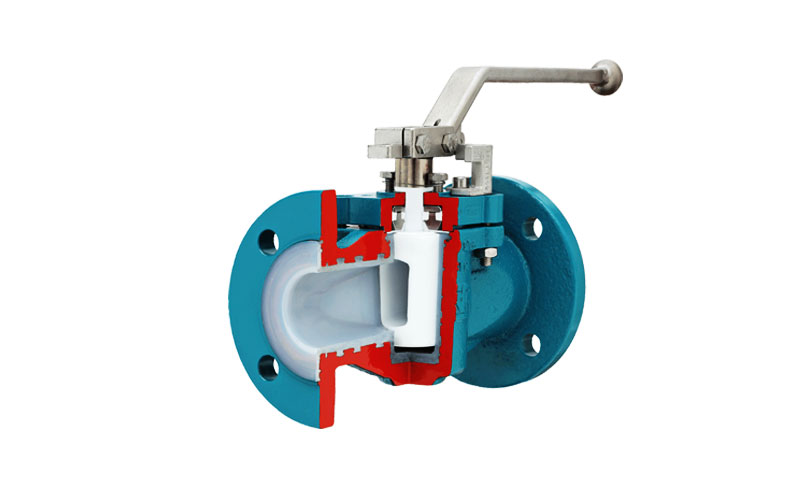1. Uvod
Čep ventil je svestrani četvrtokretni ventil koji se široko koristi za izolaciju, diverzija, i povremeno prigušivanje u industrijskim sistemima.
Njegov jednostavan dizajn - cilindrični ili konusni čep koji se rotira unutar tijela ventila - nudi brz rad, pad niskog pritiska, i robusnu pouzdanost.
Razumevanje njegovih principa, materijali, Metrike performansi, i industrijske primjene je od suštinskog značaja za odabir pravog ventila za visoki pritisak, abrazivni, ili prostorno ograničene usluge.
2. Šta je utični ventil?
A čep ventil je specijalizovani rotacioni ventil sa četvrtinom okreta koji se široko koristi u industrijskim cevovodnim sistemima za izolaciju protoka, diverzija, i povremeno prigušivanje.
Osnovni princip rada se oslanja na a cilindrični ili konusni čep smešten u kućištu ventila, koji se rotira da ili poravna svoj unutrašnji otvor sa cjevovodom za neograničen protok ili da potpuno blokira prolaz.
Ovaj jednostavan, ali robustan mehanizam omogućava brz rad od 90°, nudeći i efikasnost i pouzdanost u kritičnim aplikacijama.
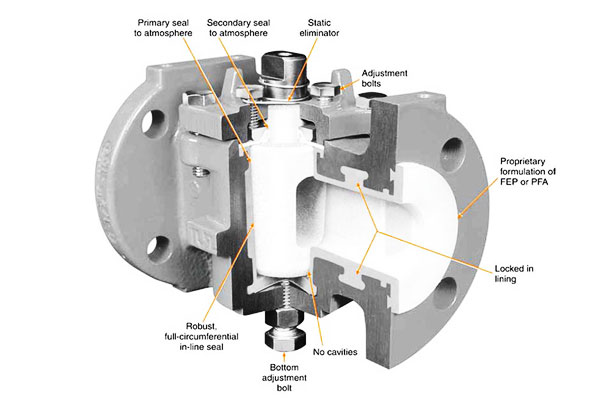
Osnovne karakteristike
- Rad u četvrtini okreta
Brzo aktiviranje (tipično 90°) — idealno za hitnu izolaciju, dužnosti preusmjerivača i aplikacije gdje je potrebno brzo uključivanje/isključivanje. - Jednostavan, Putanja protoka niske opstrukcije
Konfiguracije s punim priključkom osiguravaju protok gotovo kroz otvor cijevi uz minimalan pad tlaka; opcije sa smanjenim portovima trguju kapacitetom protoka za manji obrtni moment i troškove. - Višestruke konfiguracije portova
dva-, tri- i četverosmjerni utikači omogućavaju skretanje, Miješanje, uzorkovanje i složeno usmjeravanje bez više ventila. - Svestranost zaptivanja
Dostupno sa metal na metal sjedišta za visokotemperaturne/abrazivne usluge, otporan (PTFE / RPTFE, elastomeri) sedišta za zatvaranje otporno na mehuriće i mali obrtni moment, ili podmazano sistemi koji produžavaju vijek trajanja sjedišta u prljavim ili erozivnim medijima.
3. Klasifikacija čepnih ventila prema dizajnu
Čep ventili su kategorisani na osnovu Mehanički dizajn, Metoda za brtvljenje, i konfiguraciju protoka.
Razumijevanje ovih klasifikacija pomaže inženjerima da odaberu pravi ventil za pritisak, temperatura, protok, i zahtjevi za uslugom.
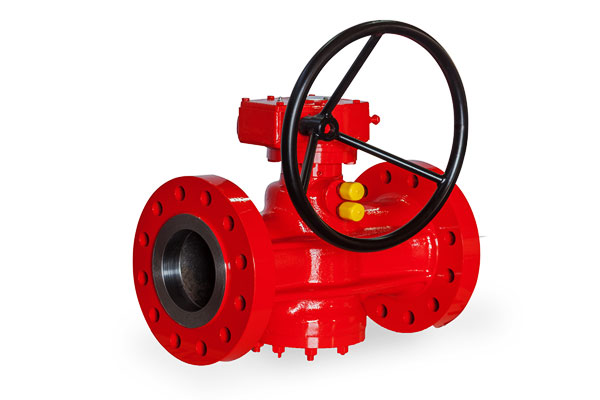
Na osnovu tipa utikača
| Vrsta | Opis | Prednosti | Tipične aplikacije |
| Cilindrični čep ventil | Ravni cilindrični čep rotira unutar odgovarajuće šupljine tijela; najjednostavniji dizajn. | Compact, isplativ, pad niskog pritiska. | Voda, plin, hemijski vodovi niskog pritiska. |
| Konusni (Tapered) Plug Valve | Konusni čep uglavljen u kućište radi čvršćeg brtvljenja. | Odlično zaptivanje; podnosi viši pritisak i temperaturu. | Petrohemijski, ulja & plin, Steam linije. |
Na osnovu konfiguracije porta
| Port Type | Opis | Prednosti | Tipične aplikacije |
| Kroz luku (Full Port) | Otvor odgovara promjeru cjevovoda; put protoka pravo kroz. | Minimalni pad pritiska; kapacitet visokog protoka. | Transport rasutih tečnosti, cjevovodi, rukovanje gnojem. |
| Reduced Port | Otvor manji od otvora cijevi. | Manji radni moment; isplativo. | Sistemi sa umjerenim protokom, instrument linije. |
| Multi-port (Tri- ili četverosmjerni) | Omogućava preusmjeravanje toka, Miješanje, ili uzorkovanje kroz više portova. | Zamjenjuje više ventila; fleksibilno rutiranje. | Uzorkovanje, diverter dužnosti, Hemijski reaktori. |
Zasnovano na Plug Support
| Vrsta podrške | Opis | Prednosti | Ograničenja |
| Plutajući utikač | Utikač leži između sedišta i slobodno se okreće. | Self-aligning; jednostavna konstrukcija. | Veći obrtni moment kod velikih dimenzija; ograničena upotreba pod visokim pritiskom. |
| Utikač montiran na klip | Utikač usidren sa gornjim i/ili donjim ležajevima. | Smanjuje radni moment; stabilan u aplikacijama pod visokim pritiskom ili velikim veličinama. | Složeniji dizajn; Viši trošak proizvodnje. |
Na osnovu dizajna zaptivki
Produženi vijek trajanja sjedišta; nesmetan rad u prljavim ili erozivnim tečnostima.
Periodično održavanje; nije idealno za sanitarne aplikacije.
lymer sjedišta pružaju čvrsto zaptivanje.
| Vrsta brtvljenja | Opis | Prednosti | Ograničenja |
| Metal-to-Metal | Tvrdo sjedalo direktno dodiruje utikač. | Visoka temperatura, visoko pritisak, abrazivni servis. | Zahtijeva veći obrtni moment; mogućnost zagrizanja bez podmazivanja. |
| Resilient Seats (PTFE, Rptfe)
</td> |
Elastomer ili po | Nizak obrtni moment; zatvaranje nepropusno za mehuriće; Kemijska otpornost. | Ograničeni temperaturni raspon; potencijalna degradacija agresivnim medijima. |
| Lubr |
4. Glavne komponente i materijali čepnog ventila
Performanse čepnog ventila, trajnost, i prikladnost za specifične primjene ovisi o tome komponente i materijali.
Svaki dio je dizajniran da izdrži pritisak, temperatura, korozija, i eroziju dok osigurava nesmetan rad i nepropusno zaptivanje.
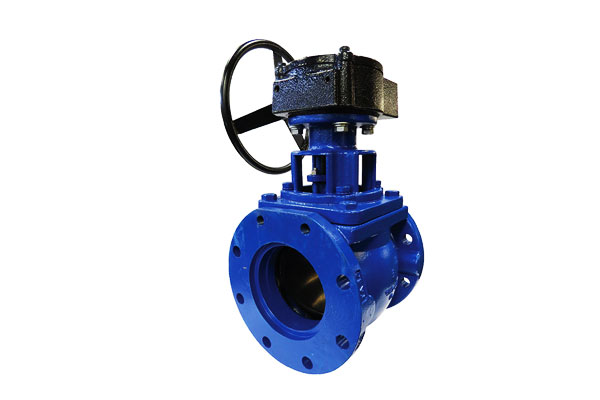
Glavne komponente
| Komponenta | Opis | Funkcija |
| Tijelo ventila | Eksterno kućište koje sadrži utikač i priključke. | Podržava opterećenja pod pritiskom, obezbeđuje put protoka, i spaja se na cjevovod. |
| Priključak | Cilindrični ili konusni rotirajući element sa jednim ili više priključaka. | Kontroliše protok poravnavanjem ili blokiranjem porta(s); primarni element za kontrolu protoka. |
| Sjedala | Metalne ili elastične površine na koje se čep zaptiva. | Osigurava zatvaranje nepropusno za mjehuriće i održava dugotrajni integritet zaptivanja. |
| Stabljika / Drška | Osovina ili poluga koja se koristi za rotaciju utikača. | Prenosi obrtni moment sa ručnog ili automatizovanog aktuatora na utikač. |
| Komora za mazivo (neobavezno) | Rezervoar između čepa i tijela napunjen mazivom (za podmazane čep ventile). | Smanjuje trenje, produžava životni vek sedišta, i sprečava nagrizanje ili koroziju. |
| Ležajevi / Palice (za čepove montirane na klin) | Podržava na vrhu i/ili dnu utikača. | Smanjuje radni moment i stabilizuje čep u velikim ili visokotlačnim ventilima. |
| Žlijezda / Pakiranje | Zaptivni element oko sučelja stabljike ili ručke. | Sprečava curenje duž drške/drške; omogućava glatku rotaciju. |
Odabir materijala
| Komponenta | Tipični materijali | Ključne svojstva |
| Tijelo & Poklopac | Carbon čelik (A216 WCB), Nehrđajući čelik (304, 316), Dupleks, Legura 20, Nikel legure | Snaga, Otpornost na koroziju, Tolerancija na temperaturu |
| Priključak | Isto kao tijelo ili tvrdo lice (Stelliti, WC preklop) | Otpornost na habanje, Stabilnost dimenzija, Kemijska kompatibilnost |
| Sjedala | Metalni (Stelliti, Monel), PTFE / RPTFE, UHMWPE | Nepropusnost zaptivanja, Kemijska otpornost, nisko trenje |
| Stabljika / Drška | Nehrđajući čelik, Legura čelika | Snaga, torzijska krutost, Otpornost na koroziju |
| Lubricant | Mineralno ulje, sintetička mast, ili maziva odobrena od strane FDA | Smanjuje trenje i štiti od korozije u podmazanim ventilima |
5. Karakteristike protoka i hidrauličko ponašanje

Sposobnost protoka (CV) — tipični rasponi
- Mali utični ventili veličine instrumenta (¼ – 1) može imati Cv ~ 0,1–5.
- Uobičajene veličine procesa (2-6) tipično domet Cv ~ 5–200 ovisno o dizajnu luke (puni port vs. smanjen port).
- Čep ventili velikog prečnika (8+) može postići vrlo visoke vrijednosti Cv, uporedivi sa kuglastim ventilima i često prevazilaze kuglaste ventile za istu veličinu.
Pad pritiska i prigušivanje
- Čep ventili su prvenstveno dizajnirani za On / Isključeno ili diverter usluga.
Dok se mogu koristiti za prigušivanje, oni su manje idealan od globusnih ventila za preciznu modulaciju zbog potencijalnih nelinearnih karakteristika protoka i habanja sjedišta kada se priguši pod visokim ΔP. - Pad pritiska raste sa protokom i opada sa veličinom otvora; Visoki ΔP servis zahtijeva posebne trimove (višestepeni ili redukcioni čepovi) kako bi se izbjegla buka i erozija.
6. metrika i klase performansi
| Metrički | Tipična briga / domet |
| Klasa pritiska | ANSI 150–2500 zajednički; viši sa kovanim dizajnom |
| Raspon temperature | Kriogeni (sa odgovarajućim materijalima) do ≈400–600°C u običnim legurama; specijalne legure proširuju domet |
| Curenje | Metalna sjedala: nisko curenje, ali nije u svim slučajevima nepropusno za mjehuriće; elastična sedišta: nepropusno za mehuriće (praktički nula curenja) |
| Životni ciklus | Podmazana metalna sedišta: dug životni vek u čistoj službi; elastična sedišta: hiljade do desetine hiljada ciklusa |
| Fugitivne emisije | Ublažite mehovima, pakovanje sa živim opterećenjem, i usklađene brtve vretena |
| Standardi & testovi | Ispitivanje pritiska školjke/sjedala, ispitivanje curenja sjedišta, NDT na kritičnim dijelovima (radiografija, MPI) |
7. Proces proizvodnje čepnog ventila
Proizvodnja čepnih ventila uključuje preciznost livenje, obrada, montaža, i testiranje kako bi se osigurala trajnost, nepropusno zaptivanje, i pouzdan rad u različitim industrijskim uslovima.

Lijevanje ili kovanje tijela i utikača
Ventil tijelo i utikač čine strukturno jezgro čepnog ventila. Mogu se proizvoditi putem:
- Livenje pijeska: Uobičajeno za srednje- na ventile velikih dimenzija. Pruža fleksibilnost u složenim geometrijama, uključujući više-portna tijela, i omogućava ugrađene karakteristike kao što su nosači klinova.
Termička obrada nakon livenja smanjuje zaostalo naprezanje. - Investicijska livenja (Izgubljeni vosak): Nudi izuzetnu točnost dimenzija i glatke površine, idealno za precizne ili manje ventile sa malim tolerancijama.
- Kovanje: Proizvodi gustu, komponente visoke čvrstoće za visoke pritiske ili kritične aplikacije. Kovani ventili imaju manje šupljina i superiornu otpornost na zamor, pogodan za standarde API 6D cjevovoda.
Precizna obrada
Nakon livenja ili kovanja, Komponente se pretrpe CNC i ručna obrada za postizanje tačnih tolerancija i glatke površine:
- Bušenje i brušenje čepa: Osigurava da se utikač slobodno okreće uz održavanje čvrstog zaptivka na sjedištu.
- Seat Machineing: Metalna ili elastična sjedišta su mašinski obrađena na mikronske tolerancije kako bi se osiguralo zatvaranje nepropusno za mjehuriće.
- Port Alignment: Kritično za ventile sa više priključaka kako bi se garantovao ispravan protok i smanjio pad pritiska.
- Završetak površine: Lazanje, poliranje, ili brušenje smanjuje trenje, sprečava nagrizanje, i poboljšava dugoročnu pouzdanost zaptivanja.
Hardfacing i premazi
Za povećanje izdržljivosti u abrazivni, erozivno, ili korozivnih medija, utikači i sjedišta mogu biti:
- Hardfaced sa Stelliti, volfram karbid, ili legure na bazi nikla, povećava otpornost na habanje i produžava radni vijek.
- Coated sa slojevima otpornim na koroziju kao što je PTFE, Poništavanje nikla, ili epoksi.
- Podmazano u specijalizovanim ventilima za održavanje rada niskog obrtnog momenta, spriječiti nagrizanje, i produžiti vijek trajanja brtve, posebno u aplikacijama za gnojenje pod visokim pritiskom.
Montaža i ugradnja
Montaža je precizna operacija koja osigurava ispravnost poravnanje, glatko aktiviranje, i integritet zaptivanja:
- Plug Insertion: Pažljivo stavljen u tijelo; podmazan ako je potrebno.
- Instalacija vretena i klipa: Ležajevi i nosači klinova postavljeni su da smanje radni moment i stabilizuju velike čepove pod visokim pritiskom.
- Pakovanje i podešavanje žlijezda: Sprečava curenje duž stabljike dok osigurava glatku rotaciju.
- Provjera pečata i sjedišta: Metalna ili elastična sjedišta se provjeravaju da li je kompresija ispravna, poravnanje, i površinski kontakt.
Testiranje i kontrola kvaliteta
Svaki čep ventil prolazi rigorozno testiranje kako bi se ispunio API, ISO, i ASTM standardima:
- Hidrostatički i pneumatski pritisak: Potvrdite integritet karoserije i sjedišta pod nazivnim radnim pritiscima i maksimalnim dozvoljenim pritiscima.
- Testovi propuštanja sjedišta: Potvrdite zatvaranje nepropusno za mjehuriće prema ISO 5208 ili API 598.
- Velika za dimenzionalna: CNC koordinatne mjerne mašine (Cmm) osigurati usklađenost sa specifikacijama dizajna.
- Mjerenje radnog momenta: Osigurava glatku rotaciju bez pretjerane sile, kritično za automatizovane ili daljinsko aktivirane ventile.
- Nerazorno ispitivanje (NDT): Tehnike kao što je penetrant boje, magnetna čestica, ili ultrazvučno ispitivanje otkriva mikro-pukotine, poroznost, ili defekti livenja.
8. Prednosti i ograničenja
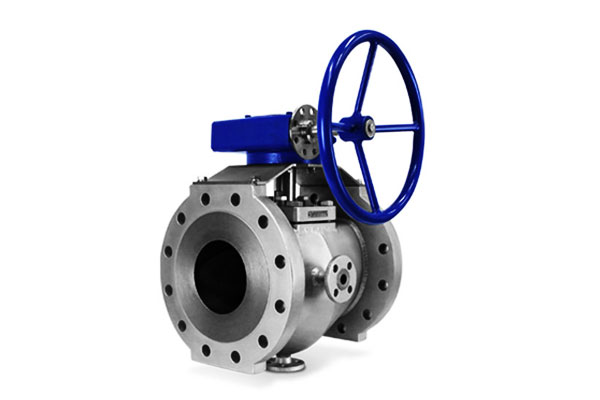
Ključne prednosti čepnog ventila
- Otpornost na abrazivnu tečnost: Ekscentrični čepovi sa sjedištima od volfram karbida traju 300% duži od kugličnih ventila u rudarskim gnojivima (po časopisu rudarskog inženjerstva).
- Pad niskog pritiska: Fully open plug valves reduce pump energy use by 10–15% vs. Globe ventili (EPA Energy Star data).
- Fast Operation: Quarter-turn design (0.5–2s for automated valves) – critical for emergency shutdowns (npr., oil well blowouts).
- Svestranost: Handles liquids, gasovi, and slurries across -196°C to 815°C – one valve type for multiple process streams.
- Izvođenje nepropusne performanse: Soft-seated valves achieve Class VI leakage (≤0.00001%) – prevents loss of expensive/toxic fluids.
Ograničenja utični ventila
- High Torque Requirements: Non-lubricated and metal-seated valves need 2–3x more torque than ball valves – larger valves require costly pneumatic/hydraulic actuators.
- Potrebe za održavanjem: Lubricated valves require quarterly grease injection – missed maintenance causes plug binding (downtime 4–8 hours per incident).
- High-Temperature Limits: Mekana sjedala (PTFE) degradirati iznad 260°C – ograničeno na rad na niskim temperaturama (npr., prerada hrane).
- Trošak: Ekscentrični i čepni ventili visokih performansi koštaju 20–50% više od kugličnih ventila – opravdano samo za teške uslove.
- Mulj sa velikim čvrstim supstancama: Višestruki i cilindrični čepovi začepljuju se čvrstim materijama >5 mm – zahtijevaju sita ili ekscentrične dizajne.
9. Primjena čepnog ventila
Čep ventili su izvrsni u teškim industrijskim okruženjima gdje drugi ventili pokvare.
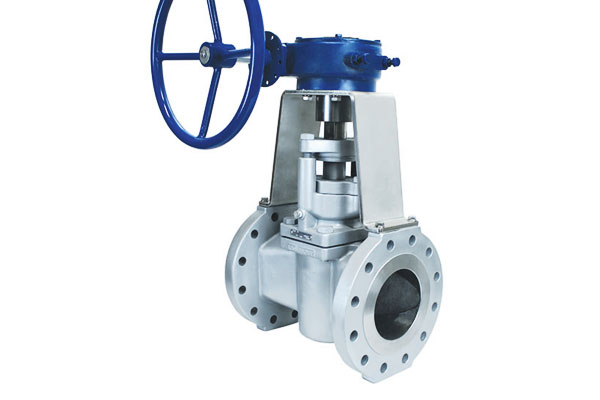
Ispod su ključni sektori i slučajevi upotrebe:
Ulja & Plin
- Uzvodno (Wellheads): API 6A podmazani čep ventili (1000 bar, 350° C) reguliraju sirovu naftu i kiseli plin – usklađenost NACE MR0175 otporna je na H₂S koroziju.
- Midstream (Cjevovodi): Ekscentrični čep ventili (6d vatra) djeluju kao blok ventili za prirodni plin (protoka do 10,000 m³/h) – nizak pad pritiska smanjuje potrošnju energije kompresora.
- Nizvodno (Rafinerije): Čep ventili sa metalnim sjedištem rade na teškoj nafti i asfaltu (400° C) – Čepovi od volfram karbida otporni su na habanje čestica koksa.
Voda i tretman otpadnih voda
- Rukovanje muljem: Ekscentrični čep ventili (Mekana sjedala, Klasa VI) rukujte muljem sa 20–30% čvrstih materija – bez začepljenja, 60% manje vremena zastoja od kuglastih ventila.
- Hemijsko doziranje: Nepodmazani čep ventili (PTFE sjedala) kontrolisati doziranje hlora/fluorida – curenje klase VI sprečava kontaminaciju vode.
- Desalinacija: 316L čep ventili upravljaju slanom vodom (538° C) – osigurava otpornost na koroziju 10+ godina radnog veka.
Chemical and Pharmaceutical
- Acid Processing: Hastelloy C276 ručka ventila 98% sumporna kiselina (650° C) – nula korozije, susreće ISO 15848-1 Klasa AH.
- Farmaceuticals: Čep ventili obloženi PTFE (ASME BPE) reguliše doziranje API-ja – curenje klase VI i CIP sposobnost sprečavaju unakrsnu kontaminaciju.
Generacija energije
- Termalne elektrane: Čep ventili sa metalnim sjedištem kontroliraju pregrijanu paru (540° C, 200 bar) – koristi se u turbinskim bajpas sistemima.
- Nuklearne elektrane: 316L čep ventili sa metalnim mehom za pakovanje rukovaju rashladnom tečnošću sa borom – nema curenja (Klasa VI) sprečava oslobađanje zračenja.
Rudarstvo i minerali
- Transport stajnjaka: Ekscentrični čep ventili (sjedišta od volfram karbida) rukovati rudarskom jalovinom (30% čvrste tvari) - 300% duži vijek trajanja od kugličnih ventila obloženih gumom.
- Procesi flotacije: Čep ventili s gumenim sjedištem kontroliraju pjenaste flotacijske kemikalije – niske cijene i jednostavno održavanje za udaljene lokacije.
10. Poređenje sa ostalim ventilima
Čep ventili su jedan od nekoliko tipova ventila koji se koriste u industrijskoj kontroli fluida.
Razumijevanje njihovih relativnih snaga i ograničenja pomaže inženjerima da odaberu najprikladniji ventil za određenu primjenu.
Tabela ispod upoređuje čep ventili sa drugim najčešće korištenim ventilima:
| Tip ventila | Dizajn & Operacija | Ključne prednosti | Ograničenja | Tipične aplikacije |
| Plug Valve | Rotirajući cilindrični ili konusni čep sa priključkom; rad u četvrtini okreta | Jednostavan, kompaktan, zatvaranje nepropusno za mehuriće; pad niskog pritiska; svestran za protok sa više portova | Obrtni moment ručnog rada može biti visok za velike veličine; često potrebno podmazivanje; Ograničeno bacanje | Purries, ulja & plin, hemijske procesne linije, preusmeravanje toka, uzorkovanje |
| Ventil za kuglice | Sferna lopta sa otvorom; tromjesečje | Brzi rad; zaptivanje nepropusno za mehuriće; dobar za visok pritisak/temperaturu; nizak obrtni moment | Ograničene konfiguracije sa više portova; nije idealno za erozivne medije | Voda, gasovoda, hemijske linije, on/off aplikacije |
| Ventil za vrata | Klizna kapija između sedišta; linearno kretanje | Minimalan pad tlaka kada se potpuno otvori; dvosmjerni; Pogodno za velike promjere | Spor rad; loš bacanje; glomazan; potencijalne vibracije ili brbljanje | Pare, voda, naftovodi; izolacione dužnosti |
Globe ventil |
Linearno kretanje utikača/sjedala ili diska/sjedala; throttling dizajn | Odlična regulacija protoka; Precizna kontrola; robusno zaptivanje | Pad većeg pritiska; složeniji; sporiji rad; veći trošak | Kontrola procesa, Hemijske biljke, Generacija energije, prigušivanje dužnosti |
| Leptir ventil | Rotirajući disk; tromjesečje | Lagana, kompaktan; umjereno prigušivanje; isplativo za velike promjere | Ograničena nepropusnost zaptivanja pod visokim pritiskom; nije pogodan za abrazivne tečnosti | Hvac, pročišćavanje vode, hemijski vodovi niskog pritiska |
| Iglasti ventil | Konusna igla i sjedište; linearno kretanje | Fina kontrola protoka; precizno merenje | Nije za veliki protok; spor rad; male veličine | Instrumentacija, uzorkovanje, laboratorijske aplikacije |
Ključni uvidi:
- Performanse za brtvljenje: Čep ventili obezbeđuju zatvaranje nepropusno za mehuriće slično kuglastim ventilima, ali može efikasnije upravljati protokom sa više otvora.
- Sposobnost prigušivanja: Linearni ventili poput globusnih i igličastih ventila su izvrsni u preciznoj kontroli protoka; čep ventili su prikladniji za uključivanje/isključivanje i preusmjeravanje, a ne za fino prigušivanje.
- Pad pritiska: Utični i kuglični ventili imaju niska Δp na potpuno otvorenim pozicijama; globusni i zasuni mogu dovesti do značajnog pada pritiska.
- Održavanje i trajnost: Podmazani čep ventili zahtevaju redovnu proveru u abrazivnim ili korozivnim medijima; čep ventili sa metalnim sjedištem pružaju dugoročnu pouzdanost u teškim uvjetima.
- Svestranost: Čep ventili sa konfiguracijom sa više priključaka mogu zamijenite nekoliko ventila u diverteru, mikser, ili sistemima za uzorkovanje, smanjenje složenosti cjevovoda.
11. Zaključak
Čep ventili su robusni, kompaktni uređaji sa četvrtinom okreta idealni za uključivanje/isključivanje, skretanje i mnoge izolacijske dužnosti.
Njihova izvedba ovisi o pažljivom odabiru nosača utikača (plutajući vs trunnion), tip sedišta (metal vs otporan), materijali i aktiviranje.
Nisu najbolji izbor za precizno prigušivanje, ali kada je brza akcija, Potrebna je jednostavna konstrukcija i robusno rukovanje prljavim ili abrazivnim tečnostima, čep ventili su često najpraktičnije rješenje.
Moderni materijali, premazi i digitalni aktuatori nastavljaju širiti svoju primjenu.
Prilagođeni sklopovi ventila iz LangHe
Langhe ponuda rješenja za montažu ventila po mjeri, specijalizirana za komponente prilagođene za specifične industrijske zahtjeve.
Koristeći napredni casting, Precizna obrada, i stručnost materijala, LangHe obezbeđuje čep ventile, Upravljački ventili, i drugi sklopovi ventila sa:
- Custom Materials: Carbon čelik, nehrđajući čelik, dupleks, Nikel legure, i materijali visokih performansi za korozivne ili visoke temperature primjene.
- Tailored Designs: Single-port, multi-port, podmazano, ili čep ventili sa metalnim sjedištem projektirani prema specifikacijama klijenta.
- Precizna obrada: CNC gotova tijela i čepovi sa malim tolerancijama za nesmetan rad i nepropusno zaptivanje.
- Skupština i testiranje: Potpuno montirani ventili, hidrostatski i funkcionalno ispitan kako bi zadovoljio ISO, API, ili standarde klijenata.
LanghePrilagođene usluge omogućavaju industrijama kao što su ulja & plin, Hemijska obrada, pročišćavanje vode, i stvaranje električne energije da se integrišu ventili koji se sastaju jedinstveno operativno, prostorni, i ograničenja performansi, osiguravanje pouzdanosti, efikasnost, i dug radni vijek.
Kontaktirajte LangHe danas za dizajniranje i proizvodnju komponenti ventila prilagođenih vašim preciznim specifikacijama.
FAQs
Koja je razlika između čepnog ventila i kugličnog ventila?
Čep ventili koriste cilindrični/konusni čep (ekscentrični dizajn smanjuje habanje), dok kuglični ventili koriste sfernu kuglu.
Čep ventili su odlični u abrazivnim/korozivnim tečnostima (300% duži vek trajanja u muljicama), dok su kuglasti ventili jeftiniji za neabrazivne, aplikacije visokog protoka.
Koji tip ventila je najbolji za abrazivne suspenzije?
Ekscentrični čep ventili sa sjedištima od volfram karbida (85–90 HRC) su najbolji.
Ekscentrični dizajn podiže utikač sa sjedišta (nema kliznog kontakta), i volfram karbid otporan je na habanje od čvrstih materija – produžava životni vek na 1-2 godine u odnosu na. 3–6 mjeseci za kuglaste ventile.
Koliko često treba podmazati podmazane čep ventile?
Tromjesečno pod normalnim servisom (ulja & plin, voda); mjesečno za abrazivne tekućine (rudarstvo). Automatski sistemi podmazivanja (pneumatski injektori) može produžiti intervale na 6-12 mjeseci.
Ventili mogu podnijeti visoke temperature?
Da. Čep ventili sa metalnim sjedištem (Stelliti 6, Hastelloy C276) rukovati do 815°C (nuklearne/elektrane). Ventili sa mekim sjedištem (PTFE) ograničeni su na 260°C.
Koja je klasa curenja čepnih ventila?
Čep ventili sa mekim sjedištem (PTFE/Viton) postići ANSI FCI 70-2 Klasa VI (≤0,00001% curenja) – kritično za toksične/skupe tečnosti.
Ventili sa metalnim sjedištem postižu klasu IV (≤0,01% curenja) – pogodno za rad na visokim temperaturama.
Kako da smanjim zahtjeve zakretnog momenta za čep ventile?
Koristite podmazane čepove (grafit-PTFE mast smanjuje trenje 50%); odaberite ekscentrične dizajne (podiže utikač sa sjedišta); osigurati pravilno poravnanje cijevi (izbegava vezivanje).
